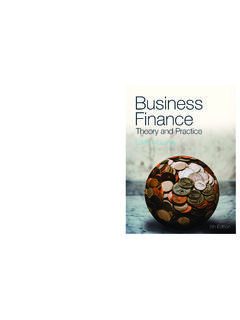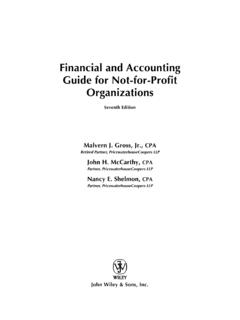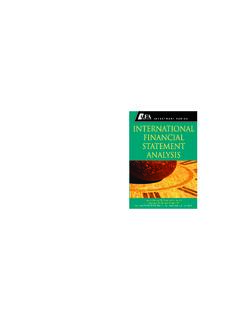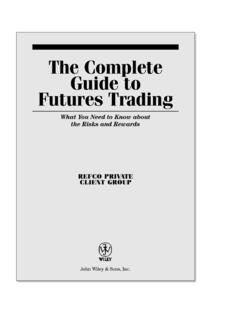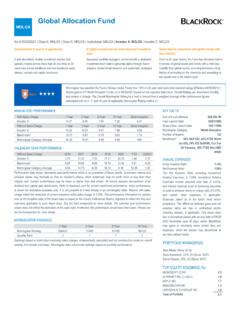Transcription of Fixed Income Analysis Workbook
1 Fixed Income . Analysis . Second Edition Frank J. Fabozzi, PhD, CFA, CPA. with contributions from Mark Anson, PhD, CFA, CPA, Esq. Kenneth B. Dunn, PhD. J. Hank Lynch, CFA. Jack Malvey, CFA. Mark Pitts, PhD. Shrikant Ramamurthy Roberto M. Sella Christopher B. Steward, CFA. John Wiley & Sons, Inc. Fixed Income . Analysis . CFA Institute is the premier association for investment professionals around the world, with over 85,000 members in 129 countries. Since 1963 the organization has developed and administered the renowned Chartered Financial Analyst Program. With a rich history of leading the investment profession, CFA Institute has set the highest standards in ethics, education, and professional excellence within the global investment community, and is the foremost authority on investment profession conduct and practice.
2 Each book in the CFA Institute Investment Series is geared toward industry practitioners along with graduate-level finance students and covers the most important topics in the industry. The authors of these cutting-edge books are themselves industry professionals and academics and bring their wealth of knowledge and expertise to this series. Fixed Income . Analysis . Second Edition Frank J. Fabozzi, PhD, CFA, CPA. with contributions from Mark Anson, PhD, CFA, CPA, Esq. Kenneth B. Dunn, PhD. J. Hank Lynch, CFA. Jack Malvey, CFA. Mark Pitts, PhD. Shrikant Ramamurthy Roberto M. Sella Christopher B. Steward, CFA. John Wiley & Sons, Inc. Copyright . c 2004, 2007 by CFA Institute. All rights reserved. Published by John Wiley & Sons, Inc., Hoboken, New Jersey.
3 Published simultaneously in Canada. No part of this publication may be reproduced, stored in a retrieval system, or transmitted in any form or by any means, electronic, mechanical, photocopying, recording, scanning, or otherwise, except as permitted under Section 107 or 108 of the 1976 United States Copyright Act, without either the prior written permission of the Publisher, or authorization through payment of the appropriate per-copy fee to the Copyright Clearance Center, Inc., 222. Rosewood Drive, Danvers, MA 01923, (978) 750-8400, fax (978) 646-8600, or on the Web at Requests to the Publisher for permission should be addressed to the Permissions Department, John Wiley & Sons, Inc., 111 River Street, Hoboken, NJ 07030, (201) 748-6011, fax (201) 748-6008, or online at Limit of Liability/Disclaimer of Warranty: While the publisher and author have used their best efforts in preparing this book, they make no representations or warranties with respect to the accuracy or completeness of the contents of this book and specifically disclaim any implied warranties of merchantability or fitness for a particular purpose.
4 No warranty may be created or extended by sales representatives or written sales materials. The advice and strategies contained herein may not be suitable for your situation. You should consult with a professional where appropriate. Neither the publisher nor author shall be liable for any loss of profit or any other commercial damages, including but not limited to special, incidental, consequential, or other damages. For general information on our other products and services or for technical support, please contact our Customer Care Department within the United States at (800) 762-2974, outside the United States at (317) 572-3993 or fax (317) 572-4002. Wiley also publishes its books in a variety of electronic formats. Some content that appears in print may not be available in electronic formats.
5 For more information about Wiley products, visit our Web site at Library of Congress Cataloging-in-Publication Data: Fabozzi, Frank J. Fixed Income Analysis / Frank J. Fabozzi. 2nd ed. p. cm. (CFA Institute investment series). Originally published as: Fixed Income Analysis for the chartered financial analyst program. New Hope, Pa. : F. J. Fabozzi Associates, c2000. Includes index. ISBN-13: 978-0-470-05221-1 (cloth). ISBN-10: 0-470-05221-X (cloth). 1. Fixed - Income securities. I. Fabozzi, Frank J. Fixed Income Analysis for the chartered financial analyst program. 2006. II. Title. 2006. '23 dc22. 2006052818. Printed in the United States of America. 10 9 8 7 6 5 4 3 2 1. CONTENTS. Foreword xiii Acknowledgments xvii Introduction xxi Note on Rounding Differences xxvii CHAPTER 1.
6 Features of Debt Securities 1. I. Introduction 1. II. Indenture and Covenants 2. III. Maturity 2. IV. Par Value 3. V. Coupon Rate 4. VI. Provisions for Paying Off Bonds 8. VII. Conversion Privilege 13. VIII. Put Provision 13. IX. Currency Denomination 13. X. Embedded Options 14. XI. Borrowing Funds to Purchase Bonds 15. CHAPTER 2. Risks Associated with Investing in Bonds 17. I. Introduction 17. II. Interest Rate Risk 17. III. Yield Curve Risk 23. IV. Call and Prepayment Risk 26. V. Reinvestment Risk 27. VI. Credit Risk 28. VII. Liquidity Risk 32. VIII. Exchange Rate or Currency Risk 33. IX. Inflation or Purchasing Power Risk 34. X. Volatility Risk 34. v vi Contents XI. Event Risk 35. XII. Sovereign Risk 36. CHAPTER 3. Overview of Bond Sectors and Instruments 37.
7 I. Introduction 37. II. Sectors of the Bond Market 37. III. Sovereign Bonds 39. IV. Semi-Government/Agency Bonds 44. V. State and Local Governments 53. VI. Corporate Debt Securities 56. VII. Asset-Backed Securities 67. VIII. Collateralized Debt Obligations 69. IX. Primary Market and Secondary Market for Bonds 70. CHAPTER 4. Understanding Yield Spreads 74. I. Introduction 74. II. Interest Rate Determination 74. III. Treasury Rates 75. IV. Yields on Non-Treasury Securities 82. V. Interest Rates 90. VI. Swap Spreads 92. CHAPTER 5. Introduction to the Valuation of Debt Securities 97. I. Introduction 97. II. General Principles of Valuation 97. III. Traditional Approach to Valuation 109. IV. The Arbitrage-Free Valuation Approach 110. V. Valuation Models 117.
8 CHAPTER 6. Yield Measures, Spot Rates, and Forward Rates 119. I. Introduction 119. II. Sources of return 119. III. Traditional Yield Measures 120. IV. Theoretical Spot Rates 135. V. Forward Rates 147. CHAPTER 7. Introduction to the Measurement of Interest Rate Risk 157. I. Introduction 157. II. The Full Valuation Approach 157. Contents vii III. Price Volatility Characteristics of Bonds 160. IV. Duration 168. V. Convexity Adjustment 180. VI. Price Value of a Basis Point 182. VII. The Importance of Yield Volatility 183. CHAPTER 8. Term Structure and Volatility of Interest Rates 185. I. Introduction 185. II. Historical Look at the Treasury Yield Curve 186. III. Treasury Returns Resulting from Yield Curve Movements 189. IV. Constructing the Theoretical Spot Rate Curve for Treasuries 190.
9 V. The Swap Curve (LIBOR Curve) 193. VI. Expectations Theories of the Term Structure of Interest Rates 196. VII. Measuring Yield Curve Risk 204. VIII. Yield Volatility and Measurement 207. CHAPTER 9. Valuing Bonds with Embedded Options 215. I. Introduction 215. II. Elements of a Bond Valuation Model 215. III. Overview of the Bond Valuation Process 218. IV. Review of How to Value an Option-Free Bond 225. V. Valuing a Bond with an Embedded Option Using the Binomial Model 226. VI. Valuing and Analyzing a Callable Bond 233. VII. Valuing a Putable Bond 240. VIII. Valuing a Step-Up Callable Note 243. IX. Valuing a Capped Floater 244. X. Analysis of Convertible Bonds 247. CHAPTER 10. Mortgage-Backed Sector of the Bond Market 256. I. Introduction 256.
10 II. Residential Mortgage Loans 257. III. Mortgage Passthrough Securities 260. IV. Collateralized Mortgage Obligations 273. V. Stripped Mortgage-Backed Securities 294. VI. Nonagency Residential Mortgage-Backed Securities 296. VII. Commercial Mortgage-Backed Securities 298. CHAPTER 11. Asset-Backed Sector of the Bond Market 302. I. Introduction 302. II. The Securitization Process and Features of ABS 303. viii Contents III. Home Equity Loans 313. IV. Manufactured Housing-Backed Securities 317. V. Residential MBS Outside the United States 318. VI. Auto Loan-Backed Securities 320. VII. Student Loan-Backed Securities 322. VIII. SBA Loan-Backed Securities 324. IX. Credit Card Receivable-Backed Securities 325. X. Collateralized Debt Obligations 327.
